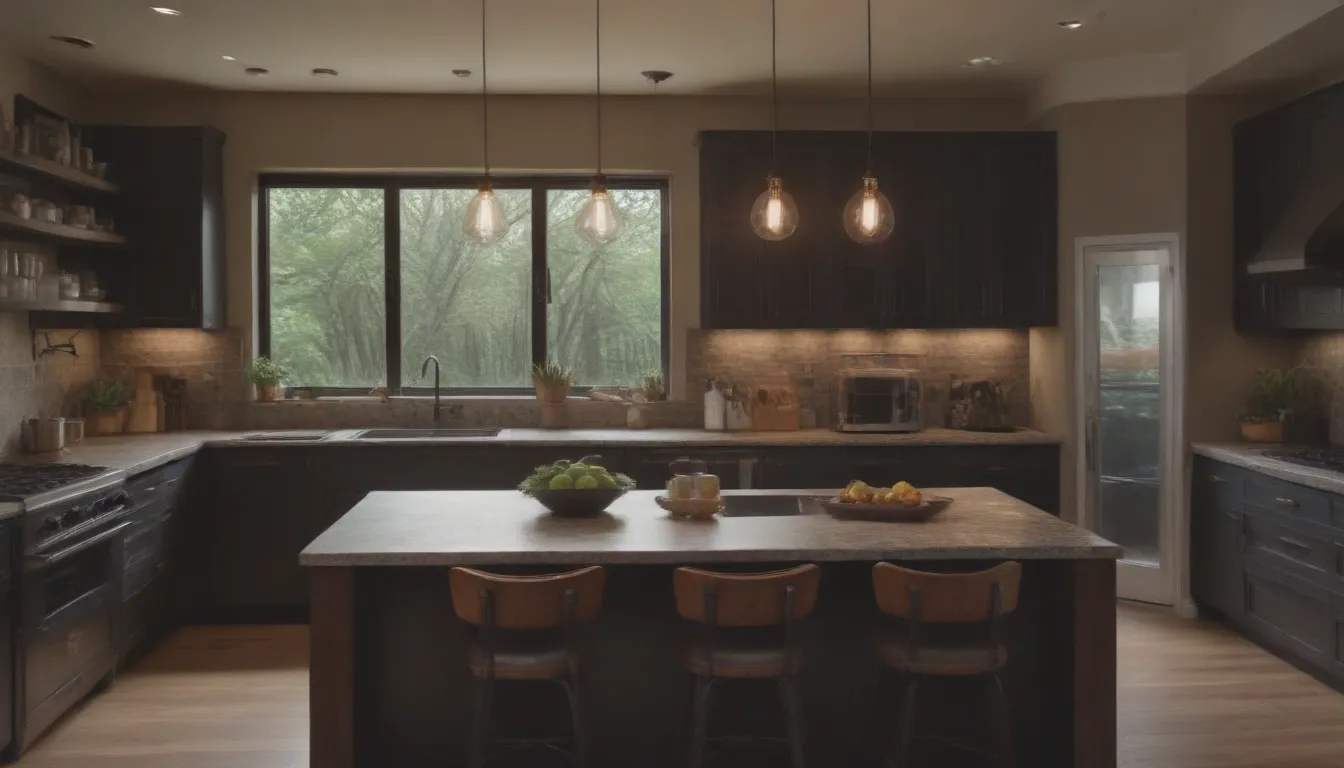A Comprehensive Guide to Kitchen Lighting: 5 Types to Consider

When it comes to designing your kitchen, lighting plays a crucial role in creating a functional and inviting space. Whether you are cooking up a storm or simply enjoying a meal with loved ones, the right lighting can make all the difference. In this guide, we will explore the different types of kitchen lighting options available to help you make an informed decision for your kitchen.
Ceiling Lighting
Ceiling lighting is often the first thing that comes to mind when thinking about illuminating a room. Most kitchens are equipped with ceiling fixtures as per building codes, making it an essential part of the kitchen lighting design. Ceiling lights provide general lighting that illuminates the entire kitchen area, making it safe and easy to navigate the space.
General Lighting
- Easy way to light up the entire room
- Satisfies building code requirements
- Increases overall safety in the kitchen
- May not adequately light up task areas such as countertops
Recessed Lighting
Recessed lighting, also known as can lights, is a popular solution for providing focused illumination in specific areas of the kitchen. These lights are flush with the ceiling, providing a sleek and minimalistic look to the space. However, one drawback of recessed lighting is shadowing, where objects or people can obstruct the light, casting shadows below.
Work Lighting
- Ideal for illuminating specific zones such as kitchen islands and countertops
- Flush with the ceiling, creating a clean aesthetic
- May not brighten up the entire space due to downward lighting
Track Lighting
Track lighting has gained popularity in recent years as a versatile and customizable lighting option for kitchens. Unlike recessed lighting, track lights are surface-mounted on the ceiling and can be easily adjusted to illuminate different areas of the kitchen. However, like recessed lighting, track lighting can also suffer from shadowing issues.
Benefits of Track Lighting
- Simple to reposition individual light fixtures
- Easy to add or remove lights as needed
- Energy-efficient LED options available
Pendant Lighting
For a touch of elegance and style in your kitchen, consider pendant lighting. These hanging fixtures bring the light down to eye level, providing excellent task lighting for specific areas such as kitchen islands. However, it’s essential to use pendant lights sparingly to avoid cluttering the space and creating visual obstructions.
Advantages of Pendant Lighting
- Offers excellent task lighting for specific areas
- Adds a touch of style and sophistication to the kitchen
- Can be integrated into track lighting systems for versatility
Undercabinet Lighting
To illuminate your countertops effectively without casting shadows, undercabinet lighting is the way to go. These fixtures are discreet and provide focused light directly onto the countertop surface, making meal prep and cooking a breeze. Opt for LED undercabinet lights for optimal performance and energy efficiency.
Benefits of Undercabinet Lighting
- Invisible when installed and blends seamlessly with the cabinetry
- Eliminates shadows on work surfaces for better visibility
- Focuses light directly on the countertop area for task lighting
In conclusion, when designing your kitchen lighting plan, consider incorporating a mix of general and task lighting to create a well-lit and functional space. Whether you opt for ceiling lights, recessed lights, track lights, pendant lights, or undercabinet lighting, each type has its unique benefits and can be tailored to suit your specific needs. By understanding the different types of kitchen lighting available, you can create a welcoming and well-lit environment that enhances your culinary experience.





